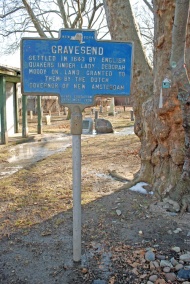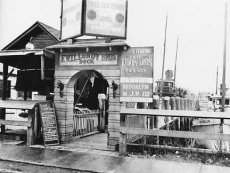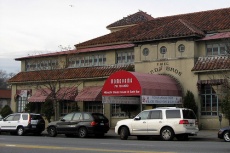User:AlikhtensteinFrom The Peopling of New York CityIntroduction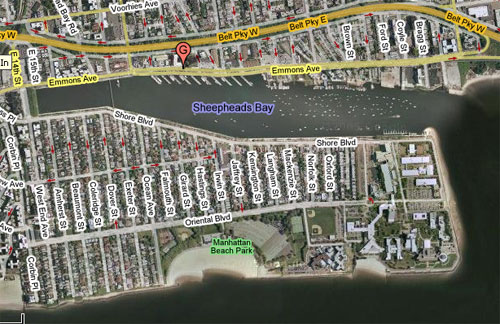 It’s near my house, I’m there a lot, it’s by the bay, and it has some old looking buildings. These were my initial reasons for deciding on Emmons Avenue as my street of choice. At the time I was oblivious to the rich history of the street, but to be perfectly honest I suspected it had to have been of some importance. And as it turns out this street, which to most people just looks like a collection of restaurants, has a rich and colorful history. When Europeans first arrived there in the 17th century, Emmons Avenue was an area surrounded by lush vegetation, abundant wildlife, and a body of water crawling with seafood. [2] As the area became more and more civilized during the 18th century, nature was paves away to make way for hotels that catered to vacationing New Yorkers who would come to visit Coney Island on the one side of Emmons Avenue, and the racetracks of Sheepshead Bay on the other. As time went on the area surrounding Emmons Avenue began to change, and Emmons changed with it. In 1910, gambling was banned in New York, and the The Sheephead Bay race track was closed down. [3] This led to the gradual decline of the hotel business on Emmons Avenue and in the early 1900's attempts were made to commercialize the street to meet the changing economic needs of its surrounding areas. These propositions met with much opposition, but eventually in 1922 Emmons Avenue was expanded, and shipping docks were installed in the bay. [4] It was not surprising that this physical change in the street ushered in a change in the street's very character. It became a commercial street, service oriented in characterized. It became the Emmons Avenue that I know and love today. Of course the reason I love it, is because the modern street has many businessmen that serve my own needs, as well as those of my family. And that's really the point. Emmons Avenue, has been, and still is a street which serves the needs of its surroundings neighborhoods.
The Founding of Gravesend: My Research BeginsMy initial research consisted of some preliminary google searches that did not yield nearly as much information about my street as I would have liked. But luckily, I was able to find out an adequate amount of information on how my street first came to be. As it turns out, Emmons Avenue was not always a part of Brooklyn. It was originally part of the only English settlement on otherwise Dutch Western Long Island, the township of Gravesend.[5] In fact it was not until 1894 that the city of Brooklyn annexed Gravesend. [6] The woman responsible for the founding of Gravesend, and consequently Emmons Avenue, was Lady Deborah Moody.[7] Being the founder of the Township that my street was located in, I felt that it was important to find out more about this mysterious English noblewoman. And as I learned more about her, I became ever more intrigued about this fascinating figure. Lady Deborah MoodyHer father, Walter Dunch, was a prominent member of Parliment who strongly endorsed personal liberty and constitutional rights.[9] It is likely that his beliefs significantly influenced the young girl who would eventually become a maverick of sorts. Deborah Dunch eventually married Henry Moody, and after he was knighted, she was given the name that history would refer to her as, Lady Deborah Moody. But for better or for worse, Moody's husband died in 1629, when she was just 33 years old. [10] The widowed Moody became attracted to a a religious denomination called Anabaptism. Anabaptist, who rejected infant baptism and required converts to be re-baptized, were persecuted during the 17th century by both Catholic and Protestant authorities. [11] To escape such persecution Moody sailed to the Massachusetts Bay Colony in 1639. But as any student of history knows, Puritan Massachusetts was not a welcoming place for those who did not share the beliefs of its religious establishment. To make matters worse, It seems as though Lady Moody was so popular that she attracted, or rather "infected" according to Governor John Winthrop, a number of residents to Anabaptist belief. She was subsequently excommunicated and forced to flee elsewhere.[12] Moody's life serves almost as a contrast to that of one of the streets win the township she created. Moody after all was a very independent woman; a women who went against the norm and constantly challenged her surroundings. Emmons Avenue on the other hand, as will be shown throughout this project, always served the needs of the communities around it. In other words, it was a natural product of its surroundings, whereas Lady Moody was the exception to her own environment. The Trip that Lead to the Discovery: Emmons Avenue as a Tourist DestinationHaving found that my internet inquiries did not produce as much information as I would have liked, I decided to take a bold step. I ventured into a place so shrowded in mystery, that few of my peers dare to acknowledge they've ever been there. That's right, I went to the Brooklyn Public Library. Once there the librarian directed me to the reference shelf where I found a dozen or so books on the History of New York City and Brooklyn. To my dismay, most of the books seemed to have no information that was truly pertinent to my street. But luckily I did come across one book that seemed have a plethora of information about Emmons Avenue. That book was called Brooklyn's Gold Coast: The Sheepshead Bay Communities by Brian Merlis, Lee A Rosenzweig, and Stephen Miller. It was in this book that I learned that during the 1800's Emmons Avenue underwent a transformation from an largely uninhabited exhibit of flora and fauna, to a street filled with hotels and other businesses that catered to tourists. The Resort Community Across the BayRight across the Bay on the south of Emmons Avenue lay a plot of land that is today known as Manhattan Beach. During the mid to late 1800's, a real estate developer named Austin Corbin, who would eventually become president of the Long Island Railroad, saw the potential for mass profit in Manhattan Beach. He believed that if he built up the right infrastructure he could lure Manhattan's well to do residents into the area transforming it into a vacation village of sorts. He turned out to be right, and Manhattan beach became collection of resorts for the wealthy. The most famous of which were the Manhattan Beach Hotel, and the Oriental Hotel, both of which Corbin built. The sheer size and magnificence of these two buildings made them tourists attractions in their own right. [14] 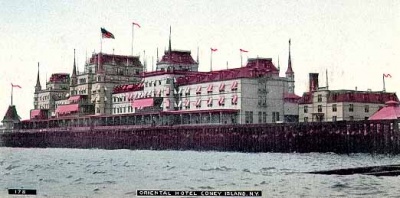 Racetracks, and Horses, and Gambling! Oh, My!To the north of Emmons Avenue was another tourist attraction, The Sheepshead Bay Racetrack, which opened its doors in 1884. [16] Just several years later The Gravesend Racetrack opened its doors several blocks away.[17] These tracks were frequented by vacationers and gamblers who were eager to win (or lose) their cash during thrilling races. They weren't all rich enough to afford the luxury resorts of Manhattan Beach, so many chose to stay on Emmons Avenue. When you add the Brighton Beach Race Track to the equation you get three racetracks within walking distance of Emmons Avenue. The map below illustrates the makeup of the area by circling the racetracks and labeling Emmons Avenue.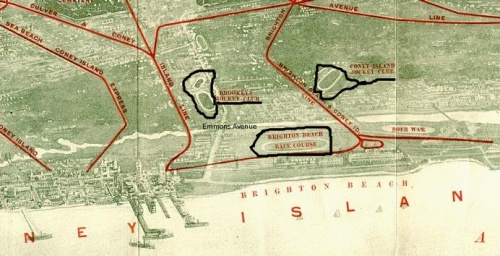 Emmons Avenue as the Center Piece [19]The Osborne and Bayside Hotels formerly located on opposite ends of Ocean Avenue. Currently home to the businesses situated in what was once the Lundy Bros restaurant on the one side and Russian Restaurant Baku Palace on the other. Emmon's avenue grew as a result of its surroundings. The race tracks, the resorts, and the nearby Coney Island amusement parks drew hordes of tourists every year. These vacationers needed places to stay and restaurants to eat in. Some were wealthy enough to afford to lavish accommodations that were offered in the Manhattan Beach resorts, but the ones that weren't were more than welcomed in the dozens of hotels that were situated on Emmons Avenue, such as the ones pictured on the left. Moreover, guests could enjoy of the the area's famous seafood, caught right across the street in then still un-polluted Bay which was teeming with with delicious seafood.[20] The Battle of the Bridge: The Common Man (or villain?) Vs. The Business AristocratDuring my research I came across a story that at the time seemed like a paradigm example of the will of the common people triumphing over entrenched business interests. But as I investigated further I was intrigued to learn that things were not as they had first appeared. It seemed as though the story I had stumbled upon was no longer the fairy tale I had thought it to be. Rather, it was a tale filled with bribes, corruption, and dirty politics on all sides. 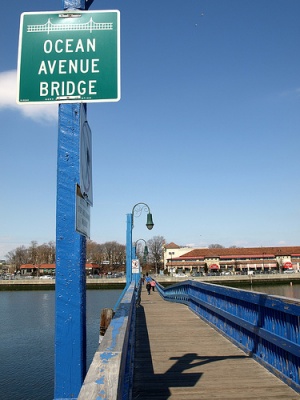 The Story as it SeemedDuring the 1870’s, Austin Corbin, the Manhatten Beach real estate developer, decided that a foot bridge across the bay linking Emmons Avenue and Manhatten would be a good idea. As a result, in 1880 Corbin and his Manhatten Beach Company built a drawbridge across Ocean Avenue. But he did not want to open it to the public, lest an influx of undesirables tarnish the elite Image of Manhattan Beach. Undesirables such as Jews, who he was famous for banning from his resorts. His decisions sparked so much protesting that he decided it would be better if he had never built the bridge built at all. As such he promptly ordered it be taken down. [22] In response to this, John Y McKane, a Sheepshead Bay carpenter who rose to many positions of prominence including Commissioner of Public Lands, ordered a replacement bridge to be built. He claimed that it was a public highway and Corbin had no right to take it down. Corbin claimed that the the bridge was the property of the Manhattan Beach Company, and as such they could do whatever they saw fit with it. McKane countered saying that Corbin was simply trying to retaliate against Sheepshead Bay residents who had signed a petition to protests the practice of throwing garbage out into the Bay that his hotels were notorious for.The residents of Gravesend seemed to be squarely on McKane's side, as they generally disapproved of Corbin's ventures, which they feared would ruin their otherwise peaceful lifestyles.[23] As the battle went on the bridge became the victim of much vandalism, resulting in its being taken down and put back up many times over. Eventually the authorities got involved and on July 8, 1881 two of Corbin's men were arrested for tearing up the bridge. After putting up barricades to bar traffic, Corbin received an anonymous letter threatening to burn down his resorts if he did not open up the bridge. He responded by posting up a $500 reward for the identity of the letter's author.[24] A commission eventually ruled in McKane's favor, saying that the bridge was a public highway, and therefore open to public traffic. Following this decisions the town obtained a Supreme court injunction that forbade obstruction of the bridge.[25] And The Plot ThickensHaving been intrigued by the the man who seemed like the people's Champion I decided to do a bit more research on John Y McKane. During the course of my research I came across a PBS documentary that exposed Mr. McKane for the corrupt politician that he was. As it turned out, John Y McKane was the boss of Coney Island. A product of the infamous Tammany Hall that I had learned much about in The Restless City by Joanne Reitano. He was a corrupt criminal and political kingpin who bribed, extorted, and exchanged favors to stay in power. [26] 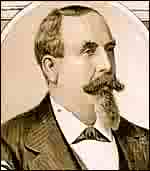
Also, as an interesting side note, recall when Corban's men were arrested for supposedly vandalizing the bridge. It was in July, 1881. As it turns out the year that John Y McKane gained control of Coney Island's force was 1881.[29] Another coincidence perhaps? A Conclusion of SortsTo date I have not found any concrete historical evidence relating to what Corban promised McKane in exchange for criminally under priced land. I doubt I ever will. The situational evidence however is far to strong to ignore. So to my dismay, I must concede that what occurred on the my street was not the iconic battle of the common man versus elite interests. But rather the fallout from a corrupt deal gone awry; where a corrupt politician felt the need to punish the business man who did not pay him sufficient dues. But then again, does any of that matter? Who cares about what McKane's intentions really were. Does it matter why somebody does a good deed? After all, if somebody donates a lot of money to charity just to snub a friend of his who did not donate as much, is it not still a good deed? Yes Mckane's intentions were far from noble. But what he did was positive. In the end he was the unintentional champion of the common man, at least in regards to this particular incident. So while it may not have been the story of the common man pitted against elite interests. It was the story of the will of the common man prevailing over that of entrenched business interests. Emmons Avenue Transforms: Not Just a Physical ChangeThe makeup of the Emmons Avenue of today looks nothing like the one I've been describing thus far. But why is that? When did it change? How did it transform? And why did it evolve? The Proposition and the OppositionIn 1909 The Army Engineers did an evaluation of the Bay and in their report concluded that it was worthy of improvement. A survey done in 1912 concluded that the bridge was only 3-4 feet deep at low tide. As a response the US Government agreed to supervise as well as maintain a seven-foot deep canal. Less than a decade after than, John Delaney, the New York City Dock Commissioner, proposed installing 22 docks along the Emmons Avenue waterfront. [30] The townspeople where not happy about this, and they vehemently opposed the idea. A meeting was held in P.S. 98 where the residents of the community unanimously voted too oppose what they saw as the commercialization of the water front. </ref> Recall if you will that it was these same residents who just a few decades earlier opposed Corbin's resorts in Manhattan Beach for fear of the disruption of their peaceful, slow paced lives. John Delancy's plan would effect them even more, and it is therefore no surprise that the community came together in opposition. [31] Changing Times, Gambling is OutlawedAs early as 1908, New York State Governor Charles Evans Hughes pushed legislation to ban race track betting.
[32]
His plan eventually passed in 1910 and because of it both the Sheepshead Bay and the Gravesend Race Tracks were forced to close their doors. The Brighton Race Track had already been closed for a number of years.
[33]
Moreover the Manhatten Beach and Oriental Hotels closed in 1907 and 1916 respectively.
[34]
Emmons avenue was no longer situated in the middle of a tourist destination. There were no great resorts across the bay, and there were no racetracks around it to attract more visitors. Its hotels and tourists accommodations were no longer viable. The street needed to undergo change, whether the area's residents liked it or not. The Compromise of 1931In July 1931, a compromise was reached. Ten 200-foot piers were planned to be built between east 21st and east 27th streets. Moreover, the road of the avenue itself was to be widened from 80 feet to 120 feet for 22 blocks. The cost of acquiring the necessary lands was two million dollars, so the borough and the city split the bill. The Lundy’s received the largest amount of money for their property, a sum of $145,000. [35]  The Lundy Bros. RestaurantIn my opinion the most impressive building on Emmons is the Lundy Bro. Restaurant. Its this impressive structure that I was referring to my introduction when I said that there were some "old looking buildings on Emmons Avenue." Luckily, during the course of my research I was able to find out the history of this structure. The Lundy brothers, Fredrick and Walter started out as small time fish dealers on Emmons Avenue. They were quite successful and eventually opened up stores in three different locations. Fredrick later opened up a small clam bar, and thanks to his success was able to acquire a larger location near Ocean Avenue. After he died his son Fredrick William Irving inherited the business and expanded it to a restaurant on stills over the waterfront. [37] It was under Irving’s tenure that the avenue was expanded, and so his building was condemned. But thanks to the substantial amount of money that he received for it he was able to build a new restaurant, one that achieved historical landmark status and has survived to this day. It was designed in a grand Spanish style and opened in 1934. It was built on what was formerly the Bayside Hotel, Mcloughlin’s Casino, and the Atlantic Hotel. In other words it was, and still is, a colossal structure accommodating up to 2800-seated diners. Irving died in 1977 at the age of 82, and left the restaurant to his nephews and nieces. It closed just two years later, after which it was sold to developers, thanks to whom been the home to several different restaurants. [38] Modern Day Emmons AvenueEver since Emmons Avenue underwent its transformation it has been the home to various businesses that have served the needs of the communities surrounding it. Currently the most common type of business to be found on the street is the restaurant. From Pizzerias, to sushi bars, to Chinese buffets, and Russian restaurants its got it all. Most people who frequent these restaurants have no idea that they're sitting on the site of what was once a hotel hub filled with vacationing gamblers. They're just go there for the food and the view of the bay. The modern day block is conveniently situated in between the three communities it caters to. The newly immigrated residents of Brighton Beach, the wealthy of Manhattan Beach, and the largely lower-middle class immigrants of Sheepshead Bay. But there are still signs the rich history of Emmons avenue scattered around the street. There's an an expensive Italian restaurant which is still frequented by gamblers making bets on the races in Belmont. The Lundy's building is still around, and is occupied by various restaurants. In fact according to zoning laws, the only types of establishments allowed in the building are restaurants. But even this might change as the needs of the surrounding communities do. Only time will tell what will happen to this street. But considering its central location, whatever it becomes it will no doubt be important. A Reflection on SourcesAs I learned in the course of his project, not all sources are created equally. My main source of material turned out to be a book I had found in the Brooklyn Public Library, Brooklyn's Gold Coast: The Sheepshead Bay Communities , by Brian Merlis, Lee A Rosenzweig, and Stephen Miller. When I first began reading it I thought it was an impressive piece of work. It seemed to really cover the history of "Brooklyn's Gold Coast" very comprehensively. Moreover, the sampling of primary sources the book employed led me to believe it was quite the scholarly work. But when I had to find places to look to dig up more information about the Ocean Avenue bridge controversy, my perceptions about the book changed. As I found out the book did not have proper citations, all it had was a bibliography. A bibliography that was in large part a collection of shorter works by the book's three authors. Not exactly the mark of great academia. Moreover, after looking back at many of the websites I had found during my preliminary research I found something very interesting. More often than not, when they quoted their sources, they quoted this very same book. So this book, of very questionable academic integrity, has in many ways become the authority on the history of my area of Brooklyn. Perhaps one day a historian will come along and correct this, but until then kudos to the Sheepshead Bay Historical society for their attempt. If nothing else it has taught me to always double check people's sources. References
|

